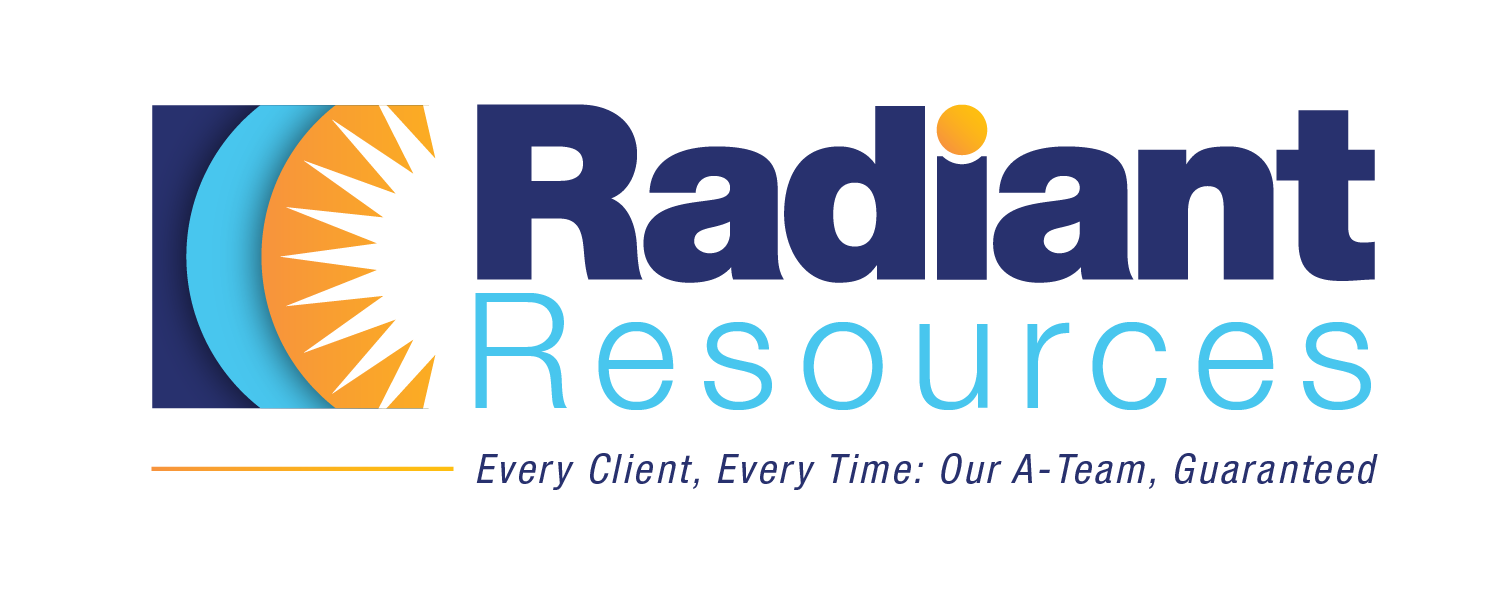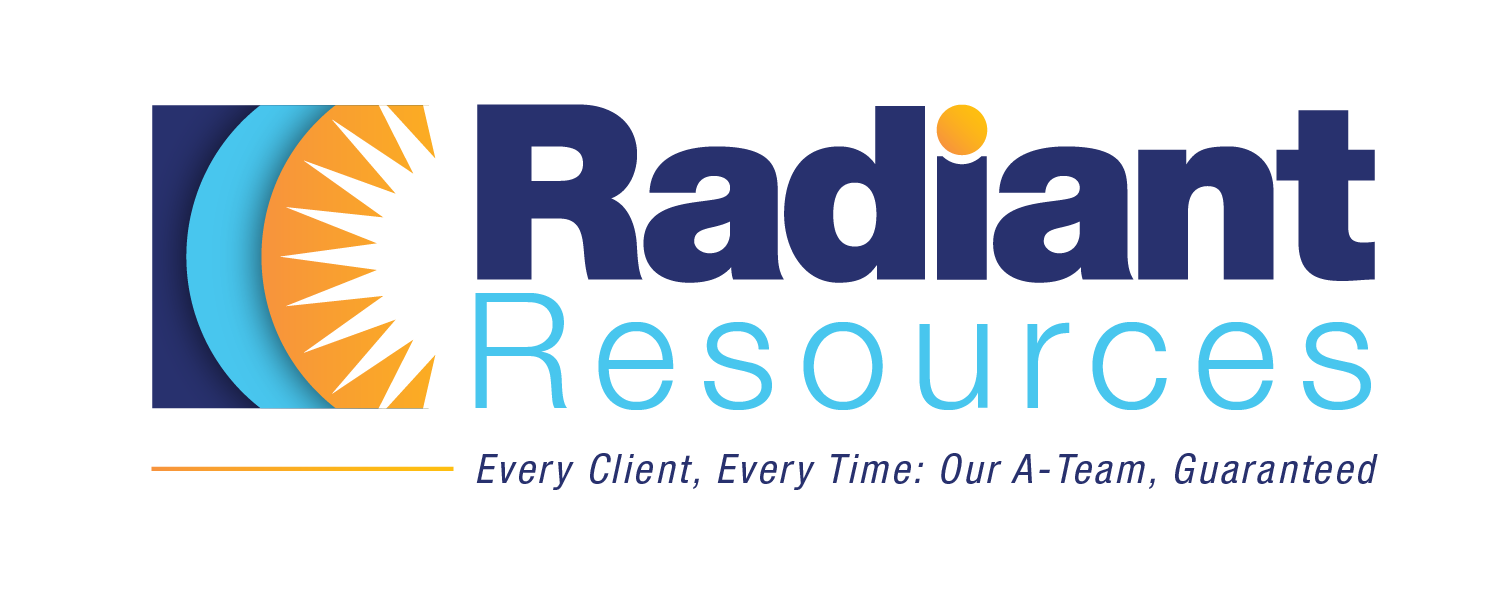Artificial intelligence is no longer a promising “next step.” It’s here, shaping competitive advantage in real-time. In her conversations with executives across industries, Jennifer Naughton, President & CEO of Radiant Resources, consistently hears the same two realities —both borne out by data:
-
Competitors who are strategically adopting AI are moving faster, operating smarter, and making sharper decisions.
Real-world results are not just showing up in our customer conversations but in real-world data. In customer support, generative AI has been shown to boost productivity by 14% and improve issue resolution quality—especially for less-experienced reps (MIT/Stanford/NBER Working Paper 31161, 2023: “Generative AI at Work” — nber.org/papers/w31161). In everyday knowledge work, Microsoft found that Microsoft 365 Copilot users were 29% faster across common tasks in controlled testing, and 70% reported feeling more productive (Microsoft Work Trend Index, 2023–2024 — microsoft.com/worklab). Zooming out, McKinsey estimates generative AI could add between $2.6T and $4.4T in annual economic value across functions like customer operations, marketing, software engineering, and R&D (McKinsey Global Institute, 2023 — mckinsey.com/mgi/our-research/the-economic-potential-of-generative-ai).
-
Those without a plan are struggling to keep up, often without realizing how far behind they’ve fallen.
Many companies are still early in their AI journey: only about a third report actively using AI today, with many more still “exploring” as they grapple with data complexity, skills gaps, and integration hurdles (IBM Global AI Adoption Index 2023 — ibm.com/reports/ai-adoption). Those that experiment in silos often find it hard to scale; McKinsey’s State of AI research shows the biggest performance gains come when AI is embedded across multiple functions and backed by strong data foundations and governance (McKinsey State of AI, 2023/2024 — mckinsey.com). And uncoordinated use isn’t just inefficient—it’s risky. High-profile incidents, like inadvertent code and data leaks to public AI tools (e.g., Samsung, reported by Bloomberg/WSJ, April 2023), highlight why enterprises need clear policies, guardrails, and approved tooling.
The pace of change isn’t slowing. The question is not if you will adopt AI, but whether your approach will accelerate your business or hold it back.
The Risks of Uncoordinated AI Adoption
Jen has seen firsthand how adopting AI one department at a time, without an organization-wide strategy, can lead to disconnected efforts and missed opportunities for greater impact. Without a cohesive, organization-wide strategy, AI initiatives can quickly lose momentum. Tools fail to integrate, data stays siloed, investments drift from business priorities, and security gaps appear. When departments experiment in isolation, resources are wasted and returns diminish. A unified, strategic approach connects efforts across the enterprise, unlocking AI’s full potential and lasting value.
Strategic AI as a Competitive Advantage
A strategic AI approach creates lasting value by aligning technology with business goals, simplifying complexity, and evolving with innovation. It empowers people through stronger expertise and smarter decisions by:
• Targeting high-impact, goal-aligned use cases tied to specific KPIs and value streams
• Maintaining clean, secure, well-governed data with clear ownership and lineage
• Building flexibility to adapt as technologies change
• Enhancing human skills and decision-making with training, workflows, and controls
When executed well, AI becomes a sustained engine for measurable results and enterprise-wide transformation.
Five questions every business owner should answer now
-
Value and fit: Which 3–5 business objectives (revenue growth, margin, cycle time, CSAT, risk) will AI directly impact, and what are the measurable KPIs and baselines for each?
-
Data readiness: Do we have an inventory of the data needed for priority use cases, with defined quality standards, access controls, and retention policies—and how will we remediate gaps?
-
Governance and risk: What policies, guardrails, and approvals govern AI use (privacy, security, IP, model risk, vendor due diligence), and how are we monitoring for drift, bias, and data leakage?
-
Operating model and skills: Who owns AI strategy and delivery across the business, what skills and training do teams need, and how will we support change management and ongoing enablement?
-
Scale and measurement: What is our pathway from pilot to production (integration, MLOps/LLMOps, support), and how will we quantify ROI with control groups, time-to-value, and post-deployment performance?
The best time to start shaping your AI roadmap is now. Small, strategic steps today can set your organization up for long-term impact, and we’re here to help you make each step count.
Sources:
- MIT/Stanford/NBER (2023), “Generative AI at Work” — nber.org/papers/w31161
- Microsoft Work Trend Index (2023–2024) — microsoft.com/worklab
- McKinsey Global Institute (2023), “The economic potential of generative AI” — mckinsey.com/mgi/our-research/the-economic-potential-of-generative-ai
- IBM Global AI Adoption Index (2023) — ibm.com/reports/ai-adoption
- Bloomberg/WSJ (Apr 2023), reporting on Samsung code/data leaks via public AI tools

